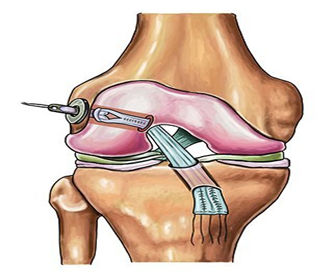ACL reconstruction is surgery to replace a torn anterior cruciate (KROO-she-ate) ligament (ACL) — a major ligament in your knee. ACL injuries most commonly occur during sports that involve sudden stops and changes in direction — such as soccer, football, basketball and volleyball.
What is ACL Construction?
The procedure to repair a damaged anterior cruciate ligament (KROO-she-ate), a key ligament in the knee, is known as anterior cruciate ligament reconstruction (KROO-she-ate). ACL injuries are most common in sports like soccer, football, basketball, and volleyball, which demand fast pauses and changes of direction.
Years ago, a torn ACL could be a career-ending injury for an elite athlete. With the advances in technology, surgical procedures, and rehabilitation, an elite athlete now has an excellent chance of returning to high-quality sports participation.
Many sportspersons in Bhubaneswar suffer from torn ACL due to their highly active lifestyle. So, is it the end of their career?
Never, there is good news for all sportspersons. Now you can avail of proper surgical treatment for ACL reconstruction from the best orthopedic doctor in Bhubaneswar.
This article will speak everything about ACL reconstruction from Dr. Sandeep Singh, Orthopedic Doctor, Bhubaneswar, in detail.
Let us start with how does ACL works?

ACL reconstruction is surgery
To keep your knee joints, stable a set of four ligaments keeps the knee in a hinge-like Position. While you move two ligaments on either side of your knee joint, the medial and lateral collateral ligaments connect to either side of your femur and tibia.
Thus, they limit shifting movement left or right. The other two ligaments, which are the anterior and posterior cruciate ligaments, connect from your femur base to the top of your tibia. They cross each other and prevent the knee from excessive forward and backward movement.
As well as they help in twisting movement in either direction. If a movement is forceful enough, any of these ligaments may snap, including the ACL. Once torn, your ACL cannot regenerate or repair itself.
How will you know that you have a tear in your ACL?
There are a few symptoms through which you will understand that you have a tear in the ACL.
The symptoms are-
- The feeling of a loud sound or “popping” in your knee
- Pain that is unbearable and makes it impossible to continue doing things
- Rapid enlargement
- Motion loss
- A sense of giving away or uncertainty while bearing weight
So, how does the operation for ACL reconstruction go?
The ACL reconstruction operation is now typically a one-hour outpatient procedure. Here, our orthopedic doctor in Bhubaneswar will discuss one of the most common ACL reconstruction methods.
- The entire surgery is completed through just a few tiny incisions. One is made to insert a small camera and deliver fluid to establish a clear view of your joint.
- We may make one or two additional incisions on either side of your kneecap to give your surgeon access to your joint.
- Another minimal incision is made to anchor the new grafted ACL in place.
- To start the procedure, our surgeon will insert a probe to inspect the damaged joint.
- A small motorized shaver then we will use to remove the damaged ACL and prepare the area for the new one.
- In every case, our surgeon will also inspect the entire joint to determine whether there is additional damage warranting other repairs.
- Our surgeon will then use a retro flipped cutter device to create a tunnel through the femur and into the knee joint.
- Our surgeon will also create a tunnel through your tibia.
- Into your knee joint below these two tunnels, these become the source of the anchor points for the ACL graft.
In most cases, the best orthopedic doctor in Bhubaneswar will harvest a portion of your hamstring tendon to use as the graft using your tissue. Our surgeon will harvest more hamstring than needed to avoid the challenge of not gathering enough for your benefit.
Hamstring tendons consistently regenerate over time as well. Our surgeon will prepare the harvested hamstring and pull it through the upper hole and into the lower hole. A small grappling hook will anchor the upper end of the ground, and a screw will stabilize the lower end.
Your body will incorporate it into the bone over time. The graph from your hamstring tendon will act as a scaffold upon which a new ACL will grow. Over time the hamstring draft changes and is strengthened, leaving a strong, viable ACL.

